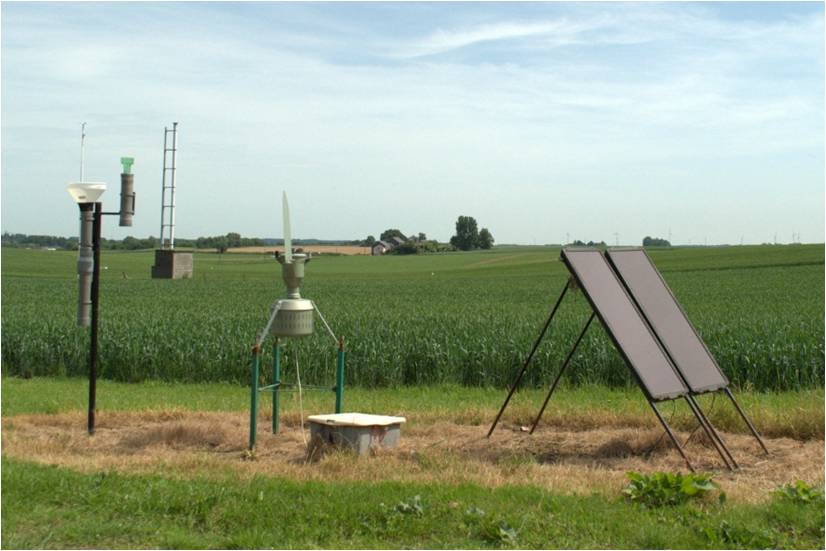Obviously, such a vague description cannot be used to predict either the start of emergence or the severity of infection in a wheat field, and the only option is to watch for the early symptoms in order to guess the pressure level of the different diseases and adjust the protection applied, if necessary. However, by the time the symptoms appear the plant is already infected and part of the yield potential has already been lost. In practice, advice to cereal growers is therefore based mainly on experience from previous years and on what is known about disease development according to the weather conditions once the plants are infected.
CRA-W and UCL attempted to measure spore flows of the main wheat pathogens before they infected the plants. This was done by positioning spore sensors with an intake of 14 m³ air per 24 hours in a network covering the main field crop growing areas of Wallonia and linking them up to weather stations. Tests were set up near each sensor to monitor disease emergence and development and test the protection schemes. The spores collected were identified with the aid of molecular tools which were used to make a daily assessment of the spore concentration of the main wheat diseases in the air. The same method was used at the same time to measure the spore concentration leached by rain.
This unusual approach has already resulted in notable progress in understanding the epidemiology of leafblotch by demonstrating that the epidemiological phase includes sexual cycles that produce spores which are dispersed by the wind and are likely to directly infect the upper leaf levels. The results will be used to correct the predictive models which hitherto assumed that wheat leaf blotch spread from the base of the plants only. Ultimately, such observations could be incorporated directly into the advice given to farmers in the growing season to enable them to adapt the crop protection to the threats measured ... in the air!
